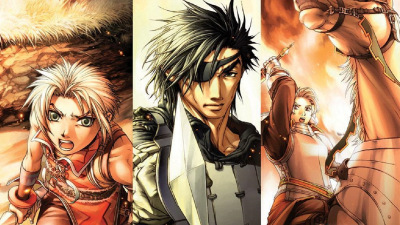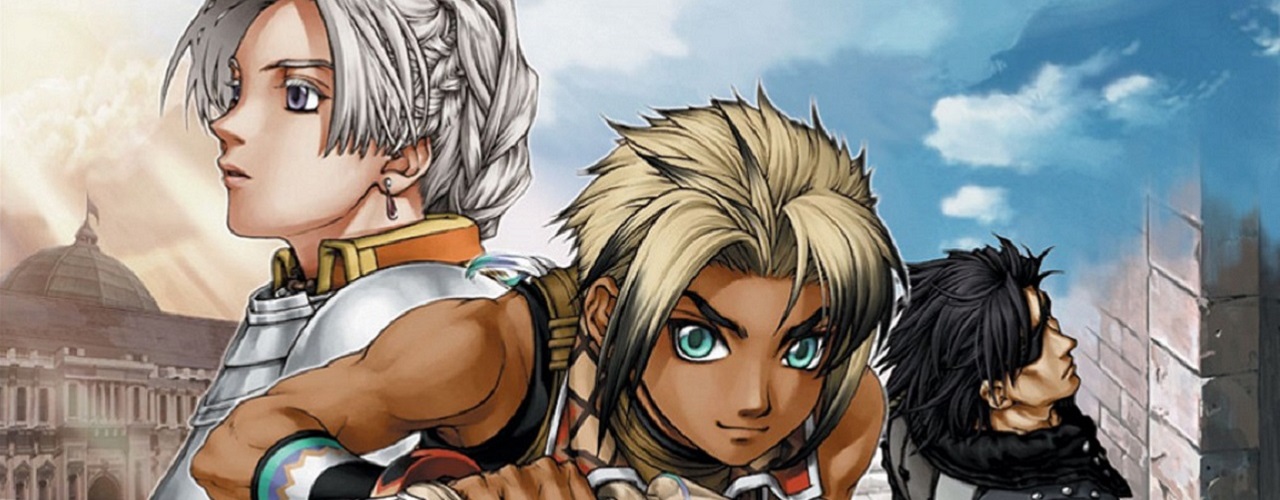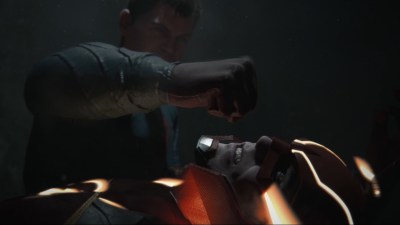It’s fair to say that Suikoden was never a genre heavyweight.
That’s a shame, because the series presented a contrast to Final Fantasy in the way a story is told within a role-playing game. Suikoden games tend to focus more on political wars and the people who are living through them, with an added emphasis on showing the perspective on both sides. Nowhere is this more apparent than in the first few games of the series, with the enemies being villains by virtue of a difference of perspective rather than being outright evil. Sure, Luca Blight was evil and committed terrible atrocities during war, but the nation of Highland wasn’t evil - nor were the people living in it.
The writers of Suikoden want to show you that there are two sides to a conflict regardless of right and wrong. War is hell and bad things happen; men and women can be driven to evil acts out of desperation that they would otherwise not commit. There were clear good guys and bad guys in the first two games, but by the time Suikoden III came out, Konami had figured out a way to make each side seem justified. What they came up with was simply phenomenal.
 Through the use of what Konami called the “Trinity Sight System,” players are able to choose which character they want to play during the game. Each of the possible three main characters provide differing opinions and perspectives on the events leading up to the war. At the start of the game you’re introduced to each of the three characters and given the choice of what order you want to play them in.
Through the use of what Konami called the “Trinity Sight System,” players are able to choose which character they want to play during the game. Each of the possible three main characters provide differing opinions and perspectives on the events leading up to the war. At the start of the game you’re introduced to each of the three characters and given the choice of what order you want to play them in.
First there is Hugo, son of Lucia and chief of the Karaya clan whose village is destroyed in a skirmish between Zexen and the glass lands clans during a botched truce summit. He’s young and brash, quick to make decisions and rarely thinks of the consequences they’ll bring. With the Karaya clan scattered by war, Hugo sets off on a quest for revenge against Chris Lightfellow - leader of the Zexen Knights. As Hugo’s travels bring him through the grasslands in search of his people he hears the legend of the Flame Champion, and ultimately concludes that he must find this man to end the war.
Then there is Chris Lightfellow herself, tasked with leading the Zexen Knights and defense of the Zexan people. At the start she is incredibly prideful to the point of arrogance in regards to the people of the grasslands and anyone outside of her inner circle, and she regularly clashes with the governing body of Vinay del Zexay. After the botched peace summit with the Karaya clans she is primarily blamed as a scapegoat to the people and flees into exile to escape trial. While on the run she comes to meet and learn more about the people living in the grasslands, and she hears the tales of the Flame Champion. Much like Hugo she seeks the Flame Champion to help bring an end to the war and clear her name.
The final hero is Geddoe, the enigmatic leader of the Twelfth Harmonian Southern Fringe Defense Force Unit – they’re working on the name – a small band of mercenaries charged with uncovering the rumors behind the Flame Champion as Harmonia prepares for war. Geddoe is older than the other two heroes and possess a level of maturity and patience that they do not, he is calculated and calm. It is through his perspective that we are shown the nature behind the events of the game - that Harmonia was behind the failed peace agreement with Zexen and the grassland tribes. Geddoe is a mystery to the player and his fellow companions, and the secrets he keeps locked inside will uncover the mysteries behind events both past and present.
 The best part about Hugo, Chris, and Geddoe is that they’re all likeable, believable and you can easily identify with where they are coming from. You’re able to see the events leading up to war between their nations through each of their eyes, and your decisions change depending on who you pick first.
The best part about Hugo, Chris, and Geddoe is that they’re all likeable, believable and you can easily identify with where they are coming from. You’re able to see the events leading up to war between their nations through each of their eyes, and your decisions change depending on who you pick first.
Playin through Geddoe’s story ultimately spoils some of the major plot beats of the other characters, but it’s hard to care about that when his story is so engrossing. Finishing up with Geddoe and alternating between Chris and Hugo means that there aren’t any more long stretches of missing out on other characters. This process of switching between characters and playing up a sizable chunk of the game’s story takes up a lot of time to the point where Suikoden III ends up feeling like three games in one.
It’s important to remember that Suikoden III plays out more like a book than a videogame, with subtle nuances between perspective transitions. The game is broken up into 5 very large chapters, and the first three chapters are in turn also broken up into equally-sized character-specific parts. Players are further given the choice of playing through the first three chapters in which ever order they would like, unable to progress past chapter three until all previous have been viewed. At the end of each character’s chapter you’re given the option to switch perspectives, which provides a great amount of detail around events that all three characters witness. You could decide to power through the first three chapters of one character at the same time, or witness each characters part in the individual chapters.
Furthermore, depending on which character you pick to start the game and which one you identify with more can easily change the outcome of the rest of the game. At the end of chapter three the main plotlines all converge together and you will then choose who you want to be the main character for the rest of the story. This will dramatically change events through chapter four and five, with dialogue and events playing out differently depending on the mindset of each character.
 Suikoden III presents a war from three different perspectives, and it does an excellent job at justifying all sides of the conflict. Zexen, the grassland tribes, and Harmonia are not evil or malicious in their actions - they are simply doing what they believe is the best course of action to take at the time. All three factions are being manipulated from the shadows by a mysterious man with his own objectives. And while his actions eventually take a turn down a dark path, it is easy to sympathize with his perspective and his motivations are clearly outlined. He’s not insane like Kefka from Final Fantasy VI, or bitter from betrayal as Sephiroth in Final Fantasy VII was; he’s simply trying to take back control of his own destiny.
Suikoden III presents a war from three different perspectives, and it does an excellent job at justifying all sides of the conflict. Zexen, the grassland tribes, and Harmonia are not evil or malicious in their actions - they are simply doing what they believe is the best course of action to take at the time. All three factions are being manipulated from the shadows by a mysterious man with his own objectives. And while his actions eventually take a turn down a dark path, it is easy to sympathize with his perspective and his motivations are clearly outlined. He’s not insane like Kefka from Final Fantasy VI, or bitter from betrayal as Sephiroth in Final Fantasy VII was; he’s simply trying to take back control of his own destiny.
This one mechanic, the splitting of the narrative between three perspectives is what single-handedly makes Suikoden III one of the most unique games in the extensive JRPG pantheon. Never before had an RPG attempted this to such a degree, which is unfortunate because it’s executed so well. What’s more impressive is that the writing is consistently strong from strart to finish. In a more traditional game the developers would have picked which character you followed and the other stories would have been inferred or given only a token amount of development, rather than directly shown to you in such depth.
Playing Suikoden III is like sitting down with an epic war novel filled with a rich cast of well-rounded characters. If the game had received more recognition at the time for how innovative it was instead of people complaining over how much Konami changed the formula, then perhaps its presence would have been felt more keenly in subsequent sequels. Suikoden III is a game to be treasured. Immerse yourself in it, learn to love its characters and it will resonate with you long after the final credits roll. Hopefully another developer in the future will take a chance on this grand of a story again.
Hey, it works for Game of Thrones.

